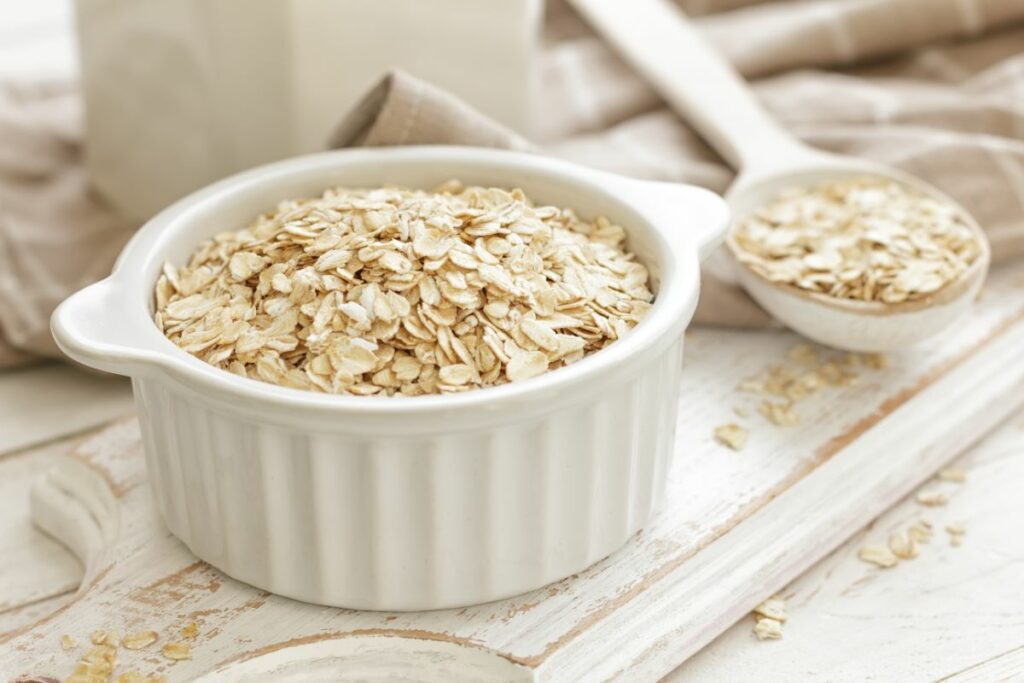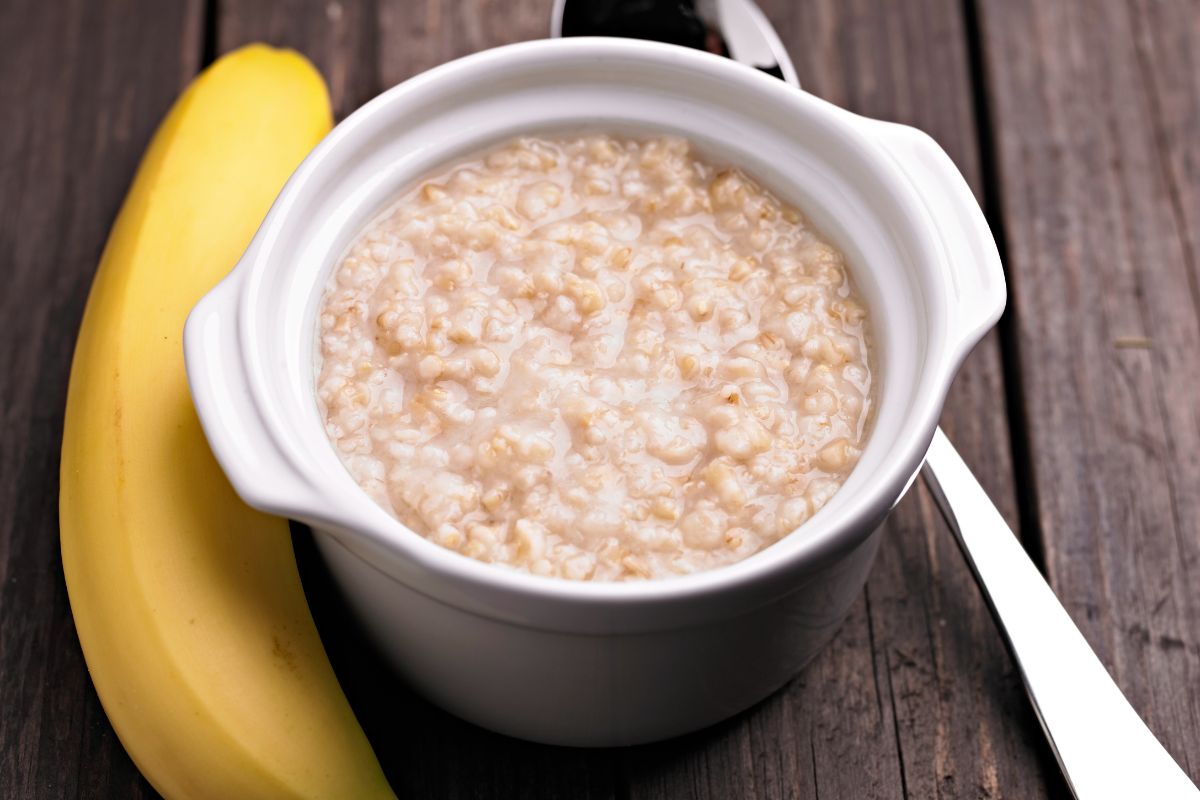Have you recently had to go gluten-free and want to know if you can still eat oatmeal? Perhaps you are looking to reduce your gluten intake and aren’t sure if oatmeal is okay to eat?
Or are you curious and want to know more? No matter the question that brought you here today, we have the answer for you!

Finding out what you can eat after cutting gluten from your diet can be tricky.
You find yourself spending hours reading packets and recipes, squinting through the fine print to see if you can enjoy oatmeal or not.
You can quickly find yourself stressed and overwhelmed, struggling to find the food you can eat and enjoy.
Well, no more! Today, we are here with the answers that you need. Just keep reading to find out if oatmeal is gluten-free and everything else you need to know about it!
What Is Oatmeal?
Before we get into today’s article, let’s have a quick recap for those that need it. Oatmeal is a hot cereal made with oats mixed into water or hot milk to create a smooth consistency.
People will often add fruit to the top of oatmeal, like bananas or strawberries to add to the dish. Spices like cinnamon and nutmeg are often added, or honey to sweeten the oatmeal.
What you add to your oatmeal is up to you! There are so many different possibilities, so you can tailor the oatmeal to your tastes. It is typically enjoyed as a hearty and warm dish enjoyed as a breakfast, or a supper before bed.
Typically ground oats or steel-cut oats are used to make oatmeal, which can be purchased in most grocery or whole-food stores.
Now that we have established what oatmeal is, let’s move on and find out if it is gluten-free or not.
Is Oatmeal Gluten-Free?
Let’s get straight into it! Most oats used to make oatmeal are gluten-free! This includes most types of pure oats, so you can add any type you want to your oatmeal!
However, you do need to take care when purchasing oats.
Often, they are contaminated as they are made in the same facilities where grains with gluten are made, like barley, rye, and wheat.
You can check on the packet of oats before you purchase them to see if there has been cross-contamination or not.
These days, most packages will clearly state if there is a risk of cross-contamination, so it shouldn’t be too difficult for you to find this information out.
You can also contact the manufacturer directly to find out if the oats are also made in the same place as products containing gluten.
When making oatmeal you also need to check that the other ingredients you are using do not contain any gluten. If you are using water or milk, then you don’t need to worry as these are naturally gluten-free.

Most dairy products are so if you were to add cream that would be fine too (although it must taste a little funky!).
The same applies to any fruit toppings that you add. Most fresh fruits are fine to add, just be careful when you are using processed fruits.
Often these will have added preservatives or flavorings that could contain gluten. If you are using these, be sure to check the ingredient list to ensure they are safe for consumption on a gluten-free diet.
You should check the packet of any seasonings or spices that you add to your oatmeal too. The chances are they will be gluten-free but could run the risk of cross-contamination.
More often than not, the cross-contamination will come from other products that are made in the same factory.
The chances of there being high levels of gluten in the product are quite low, but we think it is better to air on the side of caution than to risk getting sick!
Overall, oatmeal is gluten-free, you just need to take care and read the packaging carefully to ensure there is no cross-contamination.
Is Oatmeal In Restaurants Gluten-Free?
When ordering oatmeal in a diner, cafe, or restaurant, the first thing you need to do is make the server aware that you have a gluten intolerance.
They can then inform you whether or not the oatmeal is suitable for you to eat. Just like with oatmeal you prepare yourself, the biggest concern in a restaurant is cross-contamination.
Not every establishment has a large enough kitchen space to cook gluten-free food separately. It might need to share a burner, rack, or tray with products containing gluten.
If they come into contact with your gluten-free food, there is a chance that you could ingest some gluten. There is also a risk of the same utensils being used, which could spread gluten particles to your food.
By speaking to the server before ordering your food, you can ensure that it is cooked separately and that no utensils touch it that have been used on non-gluten-free food.
In some cases, a manager will take your order and oversee the cooking and handling of your food to ensure it is completely gluten-free. After all, it does not reflect on them well as a business if you end up sick after eating there!
You can also call ahead if you know you are going out for breakfast to ensure there is a gluten-free option available for you to enjoy. There is nothing worse than going out for food and only being able to have water!
Final Thoughts
And there you have it! Oatmeal is mostly gluten-free, you just need to check that the oats used were not contaminated when they were made with other gluten-containing products.
You will also want to check the packaging of any ingredients you add to your oatmeal to ensure there is no risk of cross-contamination there either.
By taking these steps you can ensure that gluten stays clear of your oatmeal and your diet!







